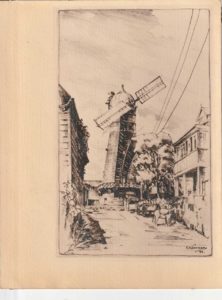By Alan La Roche
When the first settlers arrived in Howick, many were disappointed at the treeless rolling hills with only native grasses and low scrub.
Many planted quick-growing Australian gum trees or pine trees for shelter from wind and for firewood.
It was Governor Grey’s policy that soldier-settler Fencibles would be labourers for better-off farmers of Pakuranga and women would be domestic servants.
But these “peasant labourers” wanted a better life than back home. They could see opportunities by buying five-acre allotments to supplement their military pensions. Most Fencibles were worn out old soldiers who initially only grew cabbages and potatoes for their family.
Initially many of the Pakuranga farm blocks were bought by those with capital, “land sharks” buying land but not farming it, only to sell it a few years later for substantial profits. They did not need farm labourers. Albin Martin said most European settlers had one ambition” to make money fast and add field to field”.
In 1851 an Auckland newspaper recorded “the banks of the Tamaki teaming with every variety of cereal wealth divided and subdivided into golden wheat enclosures, fields of brilliant barley, heavy oats, and lush paddocks of rank and verdant clover”.
It was usual to take the sacks of grain to the miller such as Partington’s Windmill in Symonds Street, Auckland. The miller kept half the flour and the farmer sold his half to grocers and bakeries.

Captain Montressor Smith, who owned today’s Bell House, planted potatoes on his 90-acre farm with an excellent crop. The next year caterpillars ate his entire crop. Many from Howick joined the Acclimatization Society who imported blackbirds, thrushes, rooks, starlings and finches. They ate the caterpillars but some thought the bird could eat ripening grain crops.
A few well-to-do farmers gave their workers meals and a bed in the barn, but no wages. Farmworkers were also expected to attend church on Sunday mornings with their farmer employer.
The five-acre Fencibles “farms” initially sent their wheat, oats, potatoes, cheese, butter, poultry and fruit to the Auckland markets from around Howick to supplement the Maori suppliers. Pakuranga land was relatively cheap at a pound an acre in the 1850s and five pounds an acre in the 1860s. Once the swing-bridge over the Tamaki River opened in 1865, farmers could deliver their produce more efficiently. The mechanical reaper and binder replaced sickle or scythes and threshing machines replaced hand-flailing. Pakuranga became “the granary of Auckland”.
With good soils and a warm climate, many Pakuranga farmers established orchards as well as growing cereal crops.
John Udy had a substantial apple orchard in Udy’s Road and alongside the Tamaki River and in the 1880s also supplied peaches, pears, quinces, plums, damsons, cherries and apricots.
His apple crops were so productive that he dried over a ton in the warm sunshine. He also sold more than 200 gallons of Pakuranga cider.
Pakuranga once rivalled Henderson for the quality and range of seasonal fresh fruit.
Today, all this productive land is now housing and we rely on most fresh produce from further afield like Pukekohe.
Alan La Roche is a local historian.








